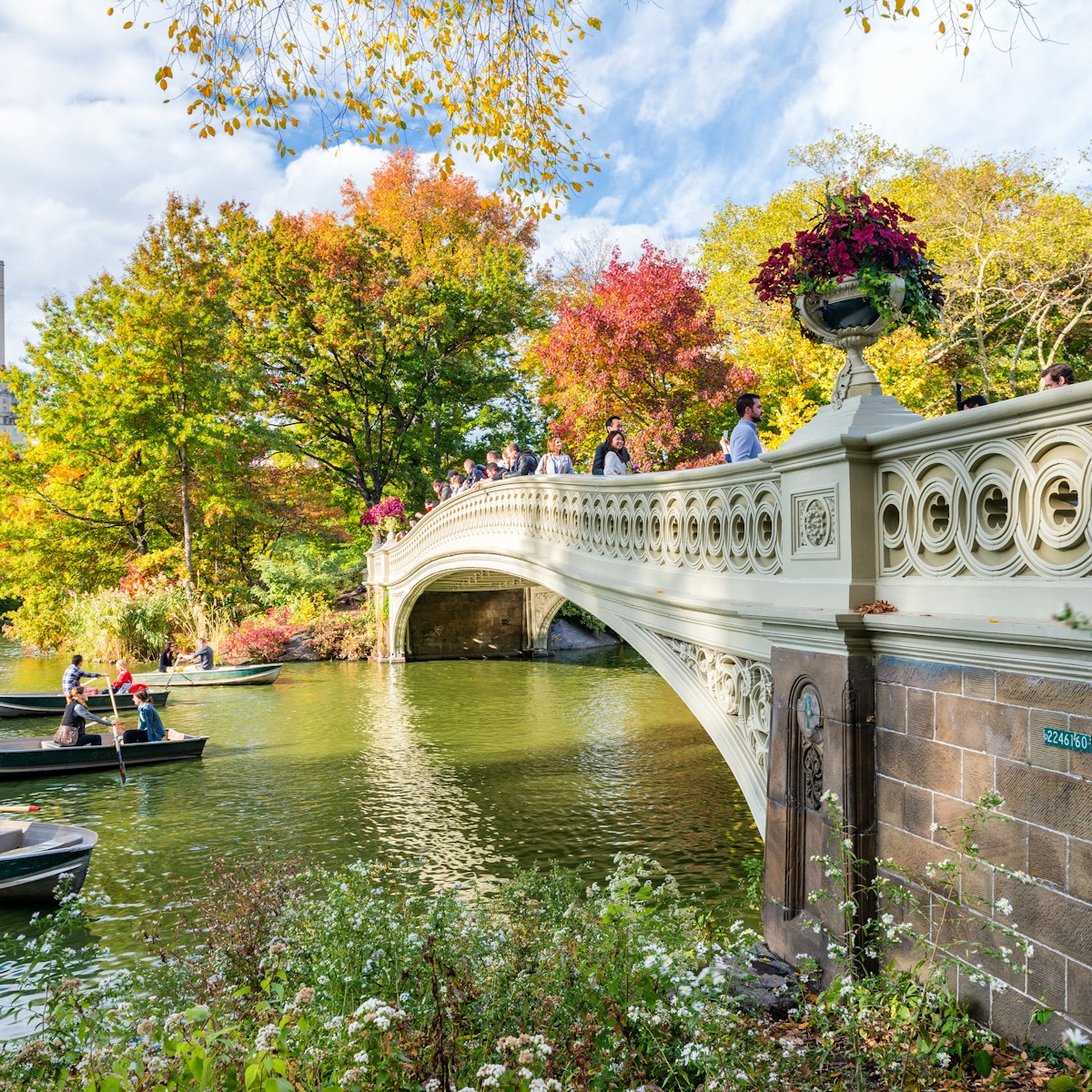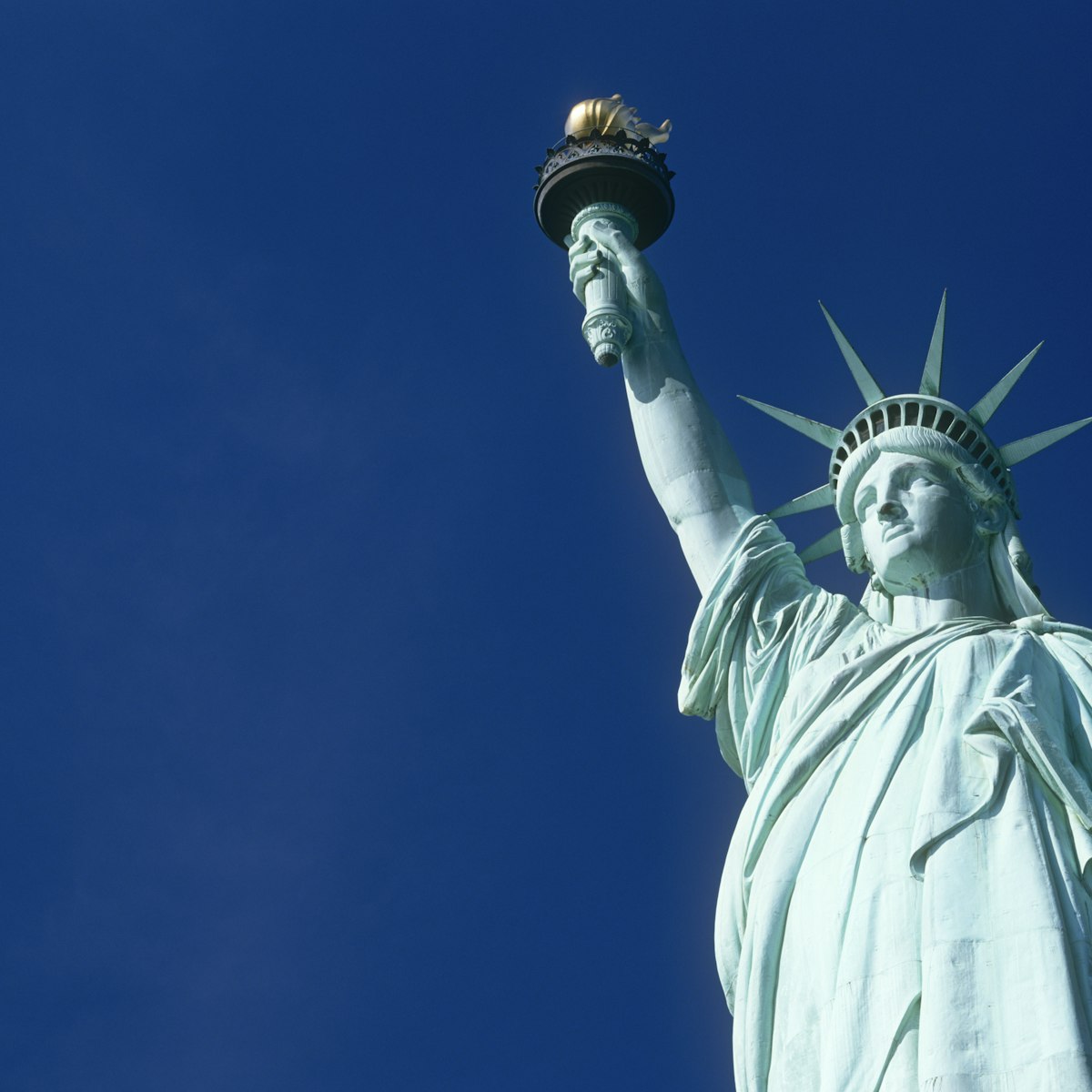A New York icon, the Solomon R. Guggenheim Museum, more commonly known as the Guggenheim, is an internationally-renowned art museum and one of the most significant architectural icons of the 20th century.
Architect Frank Lloyd Wright’s conical white spiral is probably more famous than the artworks inside, which include works by Kandinsky, Picasso, Pollock, Monet, Van Gogh and Degas; photographs by Mapplethorpe; and important surrealist works. But temporary exhibitions climbing the much-photographed central Rotunda are the real draw.
The Guggenheim is a cultural center, an educational institution and the heart of an international network of museums. Visitors can experience special exhibitions of modern and contemporary art, lectures by artists and critics, performances and film screenings, classes for teens and adults, and daily tours of the galleries led by museum educators.
History of the Guggenheim
The museum was established in 1939 and was originally called the Museum of Non-Objective Painting. It was founded by the Solomon R. Guggenheim Foundation, a nonprofit organization founded by by the aforenamed New York mining magnate. He started collecting abstract art in later life with the help of his long-time art advisor, artist and museum director, Hilla von Rebay, and he bequeathed the initial collection.
In 1943, Frank Lloyd Wright was commissioned to design a building to house the museum, which adopted its current name in 1952 after the death of its founder. Guggenheim’s passing in 1949 contributed to the delay in completing the building, along with many modifications to the design, the acquisition of additional property and the rising costs of building materials following World War II.
Construction began in 1956 and the museum opened to the public on October 21, 1959, six months after Wright’s death. The inverted ziggurat structure was derided by some critics but hailed by others, who welcomed it as a beloved architectural icon. The museum closed for three years in 1990 for renovations, including the addition of an eight-story tower. The Guggenheim reopened in 1992 with the entire original Wright building now devoted to exhibition space and the tower containing 4750 square meters of new and renovated gallery spaces.
The Guggenheim was designated a National Historic Landmark in 2008, and was inscribed on the Unesco World Heritage List in 2019 as part of the 20th century architecture of Frank Lloyd Wright. It has since opened other notable branches in Bilbao and Venice, and its Abu Dhabi museum is currently under development.
What to do at the Guggenheim
The museum’s ascending ramp (known as the Rotunda) is occupied by rotating exhibitions of modern and contemporary art. Though Wright intended visitors to go to the top and wind their way down, the striking single semi-circular elevator can make this difficult on busy days. Exhibitions, therefore, are installed from bottom to top.
Pick up the free audioguide or download the Guggenheim app for information about the exhibits and architecture. You an discover works in the Thannhauser Collection with the child-friendly audio descriptions, available on the Guggenheim’s Digital Guide. You can also enhance your experience of the building with a Family Activity Guide on architecture.
There are two good on-site food options: the Wright, at ground level, a space-age restaurant serving steamy risotto and classic cocktails, and Café 3 on the 3rd floor, which offers views of Central Park, coffee and light snacks. Both venues are components of the original building design and worth a look in their own right for their splendid aesthetics.
Tickets and other practicalities
The museum is located at 1071 Fifth Avenue between 88th and 89th Street. Travel on the 4, 5, 6 and Q subway lines, or take the M1, M2, M3, or M4 bus lines on Madison or Fifth Avenue.
Standard adult tickets cost $25, while seniors, students and visitors with disabilities are $18. Children under 12 are free as are caregivers for people with disabilities. Tickets can be reserved online here.
The Guggenheim hosts Pay What You Wish on select Saturdays from 4–6pm. Visitors can also receive free admission on one Saturday per month through Saturday on the House, sponsored by The Macallan.
Accessibility
The closest wheelchair-accessible subway station is the Q at 86th Street. M1, M2, M3 and M4 buses equipped with wheelchair lifts stop between 86th and 87th Streets on Madison Avenue going uptown and on Fifth Avenue going downtown.
Standard manual wheelchairs are available free of charge at the museum and do not require reservations. American with Disabilities Act-compliant bathrooms are located on levels 1 and 7. All levels of the museum are accessible by elevator with the exception of the High Gallery, which has two low stairs at the entrance. Elevators are available from the ground floor at all times, including when the Rotunda is closed to the public between exhibitions.
Monthly Mind’s Eye tours and workshops for visitors who are blind or have low levels of vision are conducted by arts and education professionals through verbal descriptions, conversations, sensory experiences and creative practices. American Sign Language (ASL) interpretation is provided for select Curator’s Eye and Conservator’s Eye tours for visitors who are deaf or hard of hearing. ASL interpretation is available for public tours and programs if the request is submitted two weeks before the event date.
The museum also has a social narrative guide for people on the autism spectrum. Full information on accessibility is available here.











